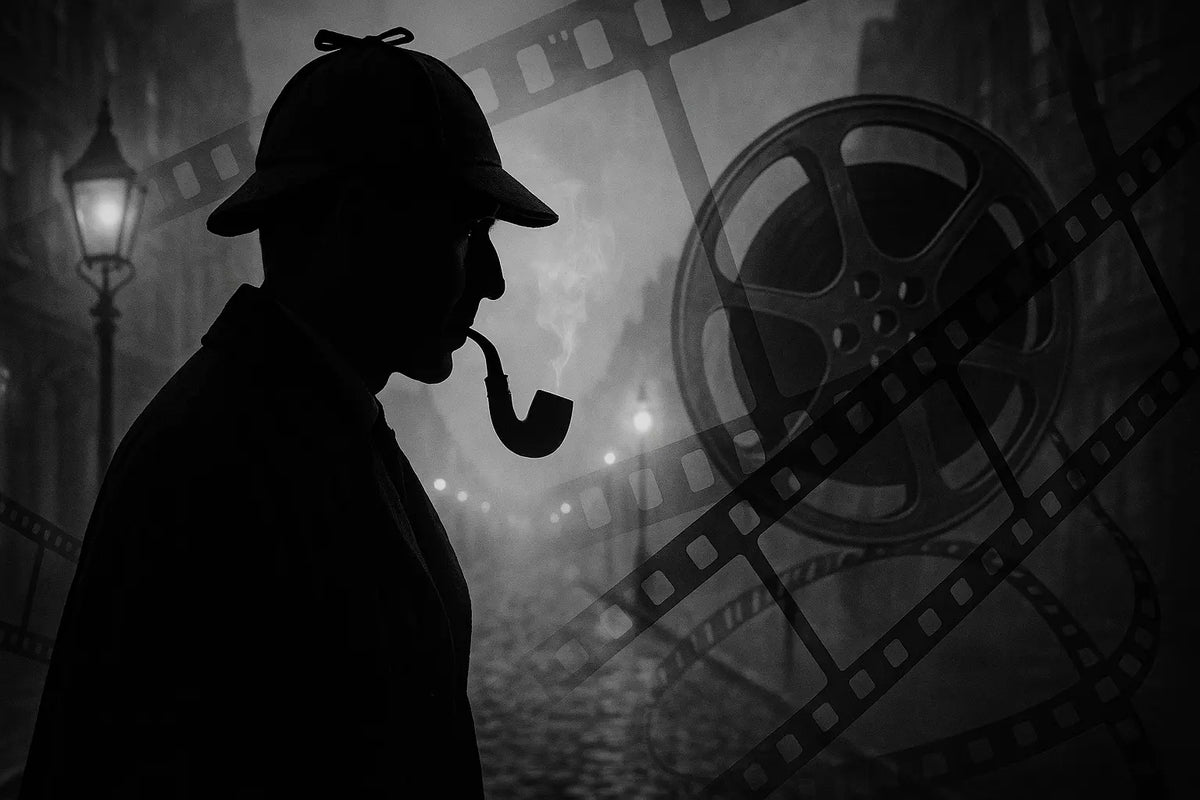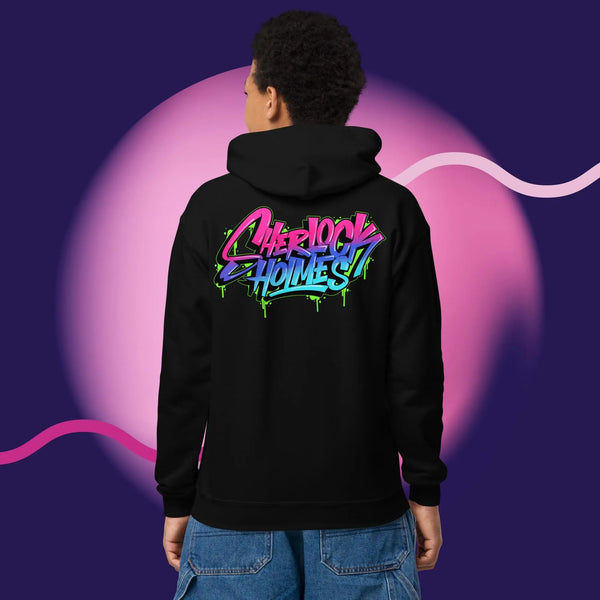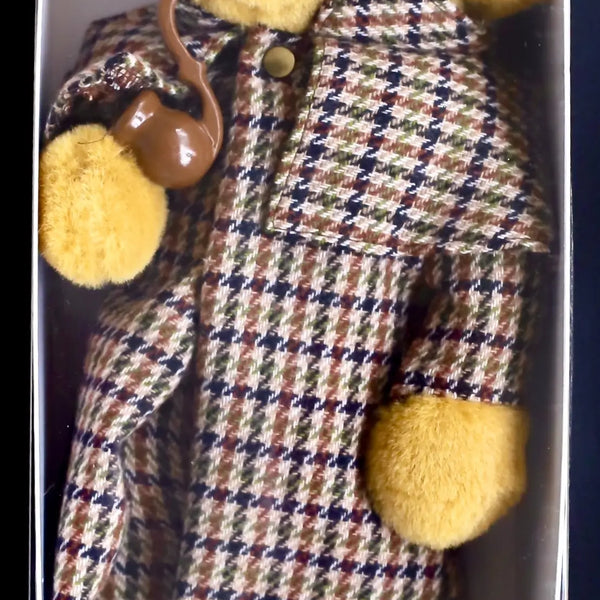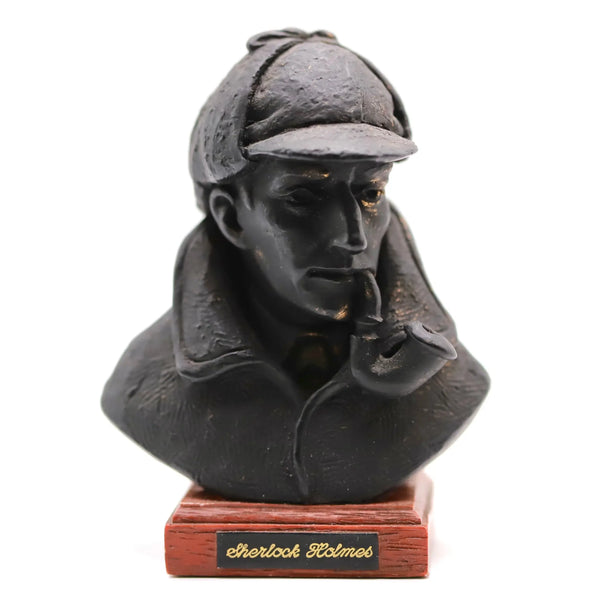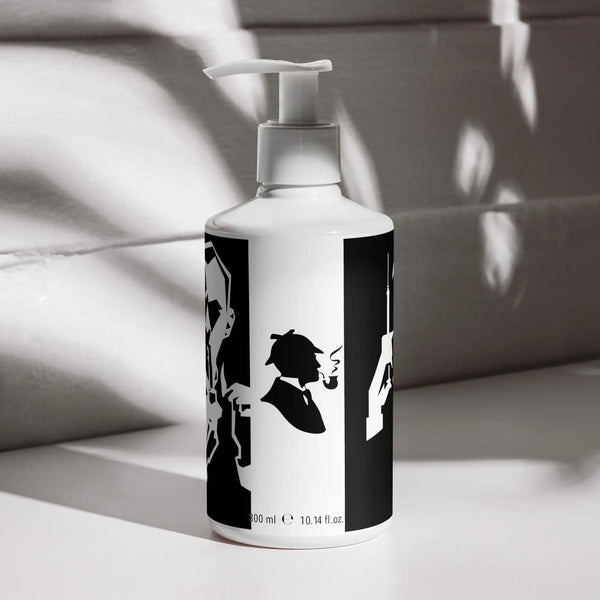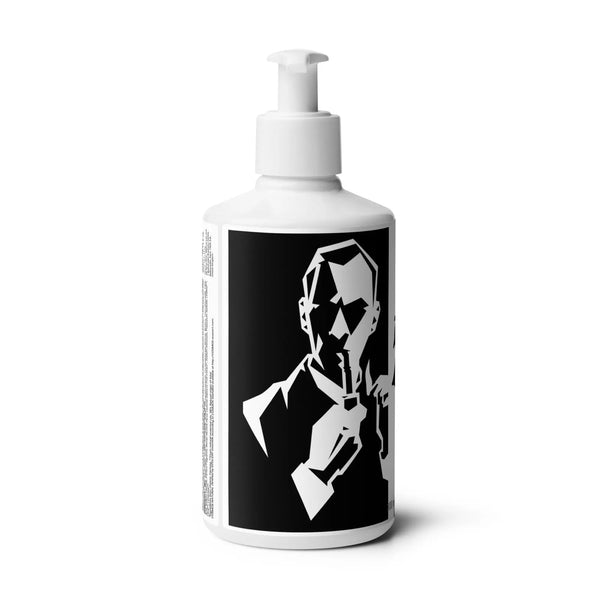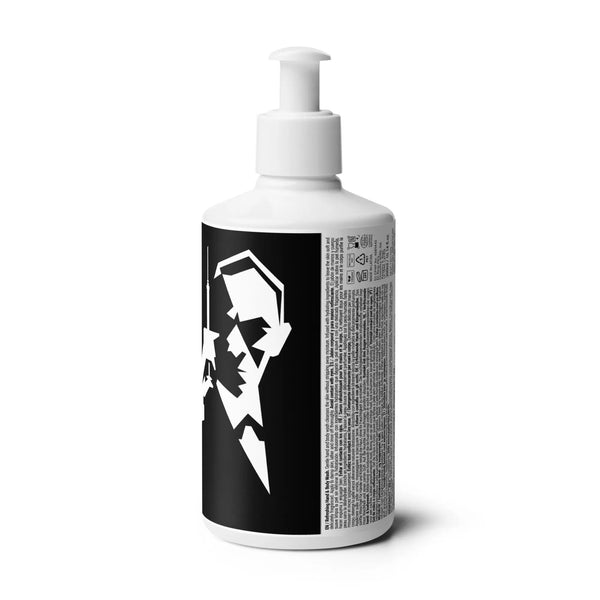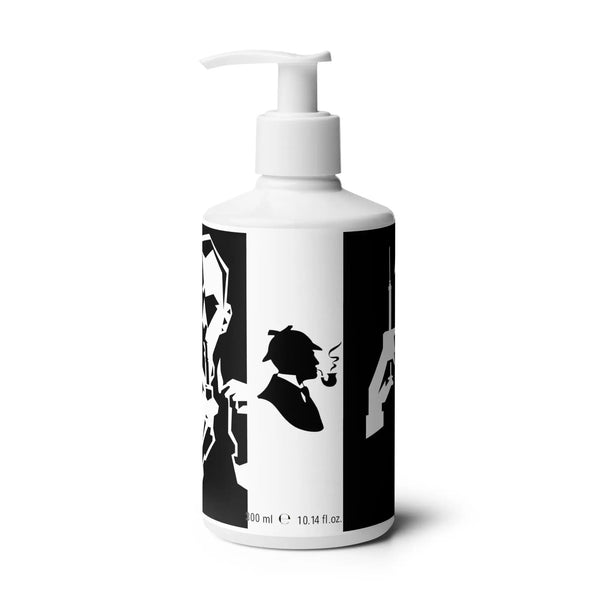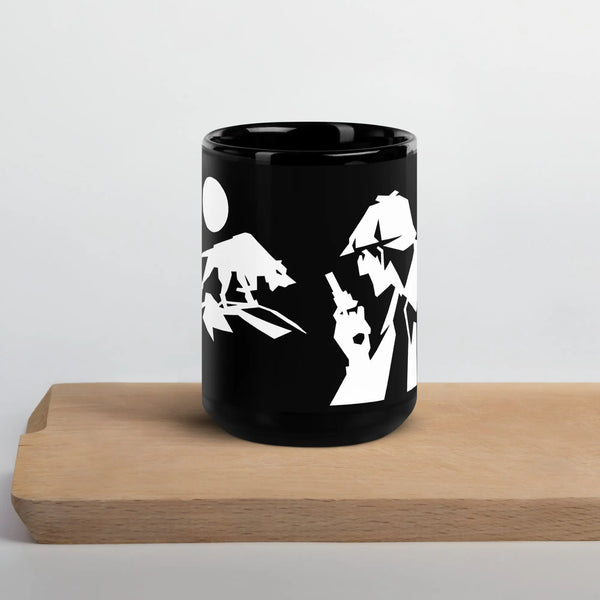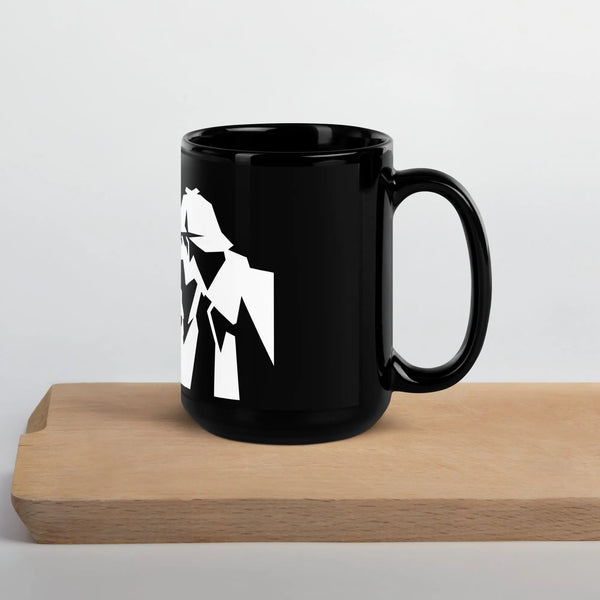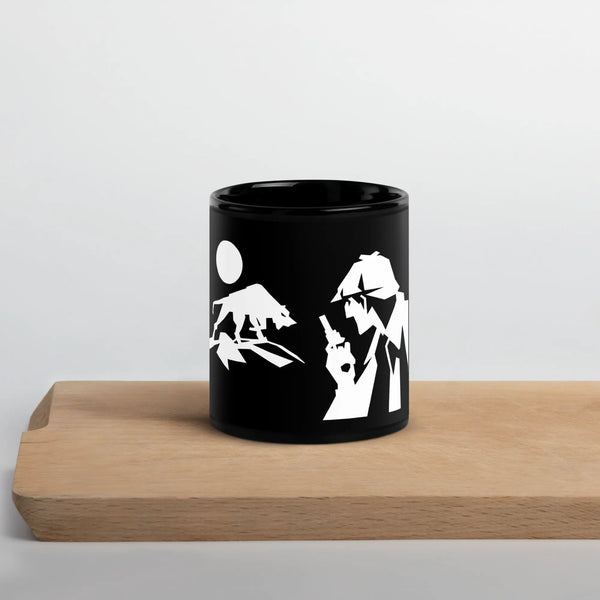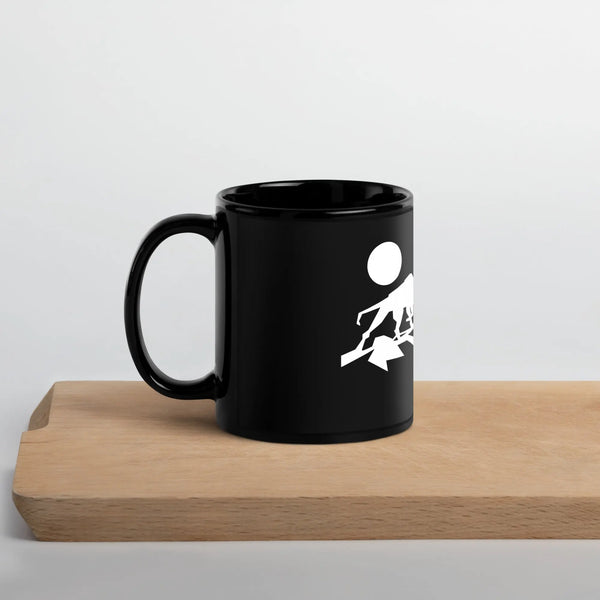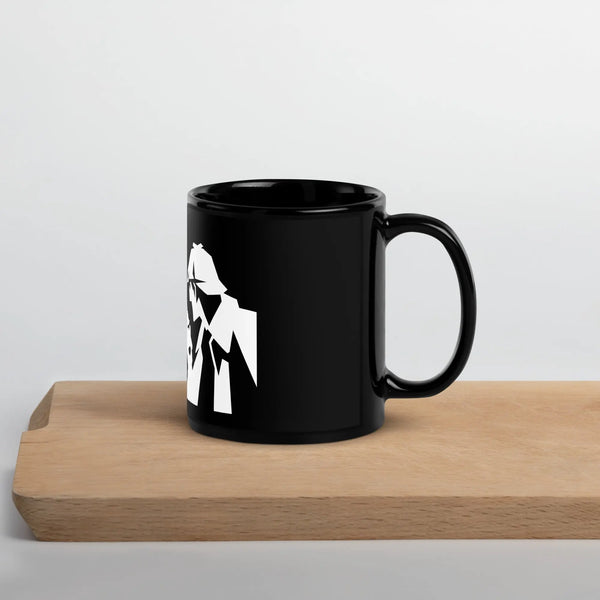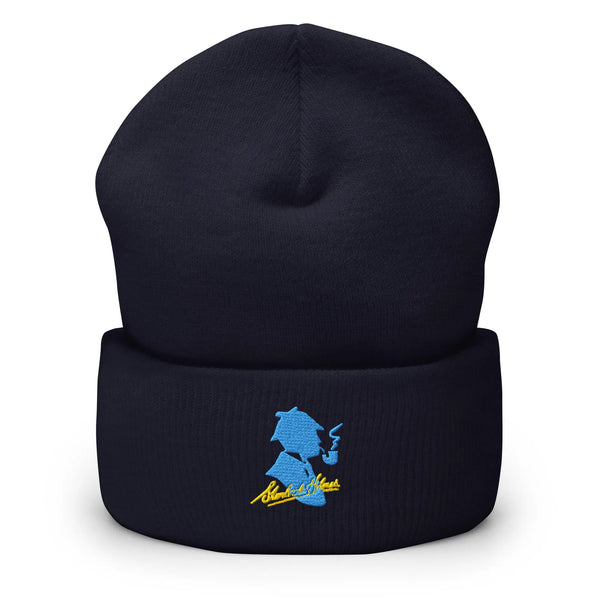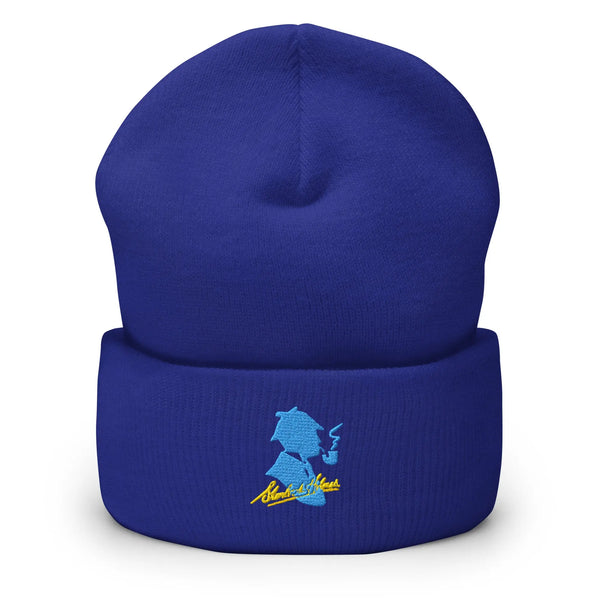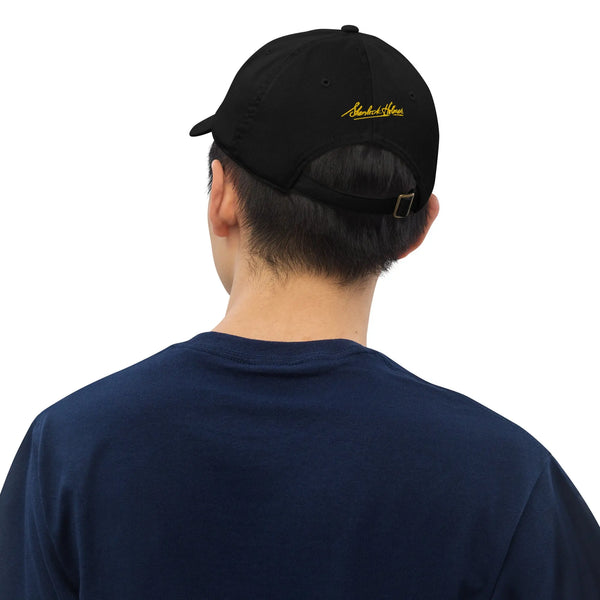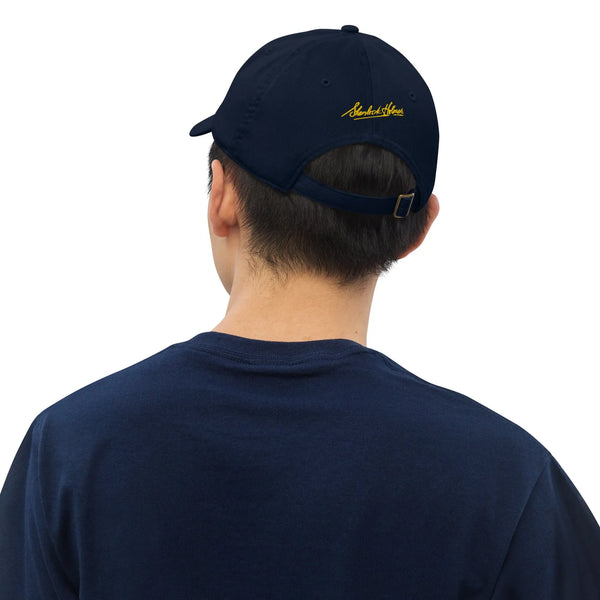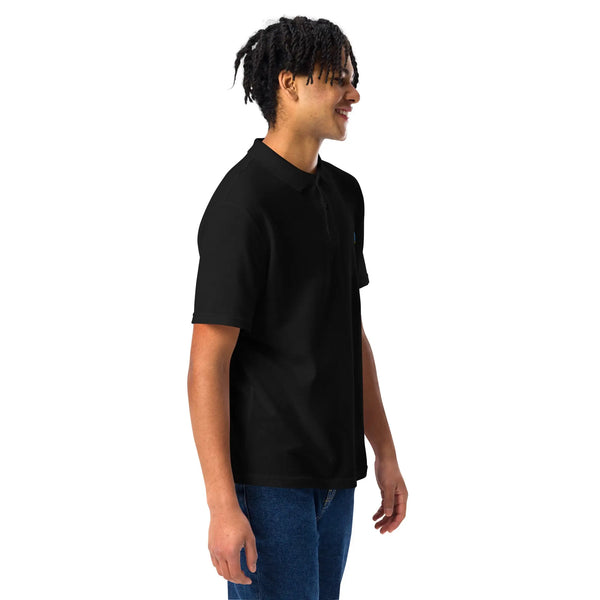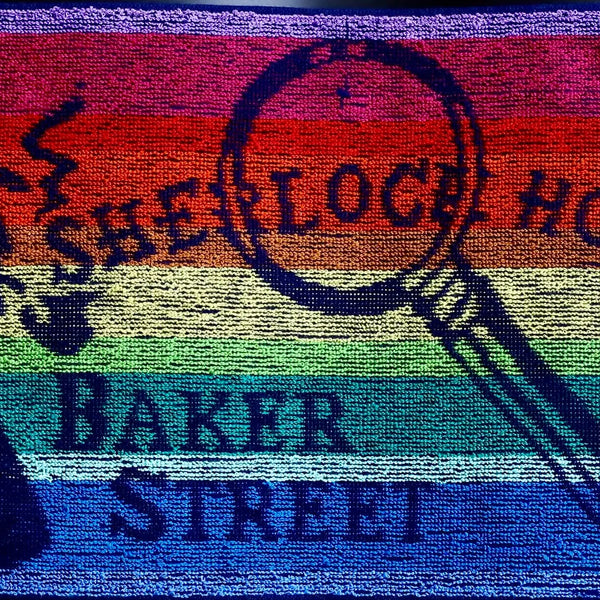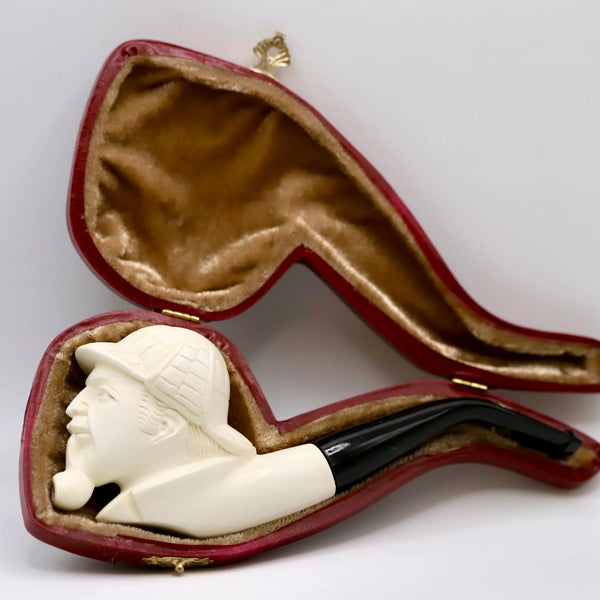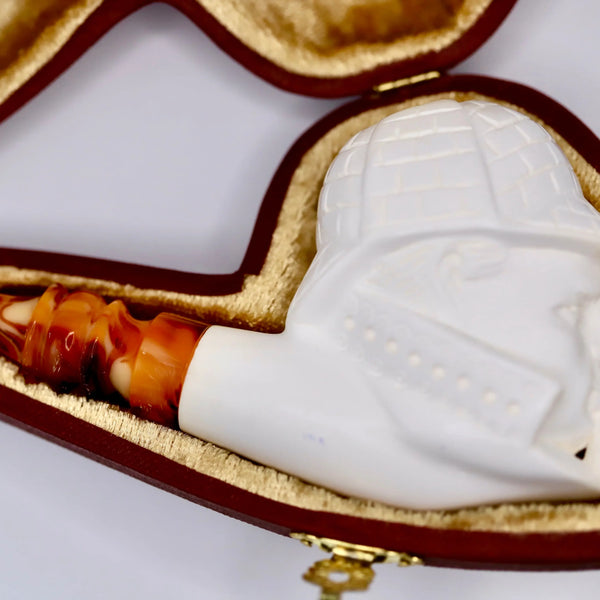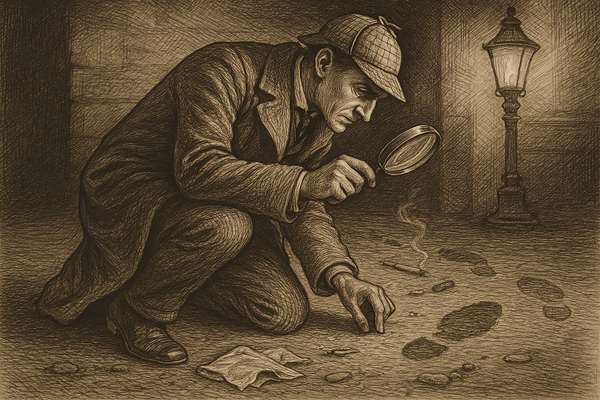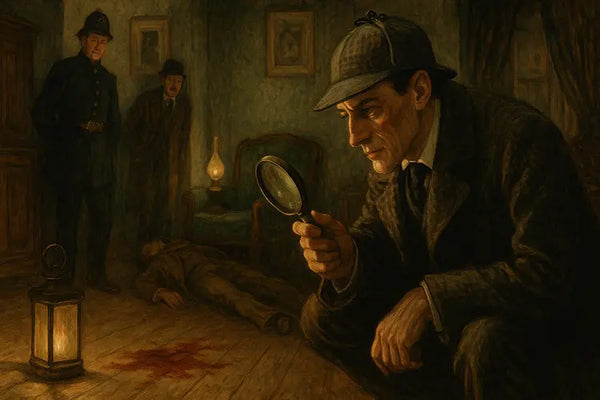For more than a century, the world's greatest consulting detective has captivated audiences on the silver screen, with each generation discovering Sherlock Holmes through fresh interpretations. From silent films to modern blockbusters, detective Sherlock Holmes has proven remarkably adaptable, with numerous actors bringing different dimensions to the character while maintaining the essential brilliance that defines the master sleuth. This article chronicles the evolution of Sherlock Holmes movies through the decades, examining how different eras have reimagined the character and his faithful companion Dr Watson.
The Silent Era (1900-1929)
The cinematic history of Sherlock Holmes began in the earliest days of film. The very first appearance came in the 30-second "Sherlock Holmes Baffled" (1900), showing a burglar who mysteriously vanishes when Holmes attempts to apprehend him. This curiosity marked the detective's entrance into a medium that would help cement his global popularity.
During the silent era, numerous actors took on the role of Holmes in adaptations of stories by Sir Arthur Conan Doyle. The Danish actor Viggo Larsen portrayed Holmes in a series of films between 1908 and 1911, while in Britain, Eille Norwood became particularly associated with the role, appearing in 47 short films and features from 1921 to 1923.
The American actor John Barrymore brought significant star power to "Sherlock Holmes" (1922), a feature film loosely based on the William Gillette play. Barrymore's portrayal emphasized the romantic aspects of Holmes, presenting him as a more conventional leading man than the cerebral detective of the stories.
These early films established visual elements now considered quintessentially Holmesian—the deerstalker hat and curved pipe—despite neither being specified in Conan Doyle's original descriptions. They also helped solidify the character's association with foggy London streets, Baker Street, and the Victorian era in the public imagination.
Despite technical limitations, these silent films demonstrated cinema's potential for bringing the detective's adventures to life, establishing Holmes as a visual as well as literary icon.
The Basil Rathbone Era (1939-1946)
For many cinema enthusiasts, Basil Rathbone remains the definitive screen Holmes. Between 1939 and 1946, Rathbone starred in 14 films as the legendary detective, with Nigel Bruce as his loyal companion Dr Watson. The series began with two period pieces at 20th Century Fox—"The Hound of the Baskervilles" and "The Adventures of Sherlock Holmes" (both 1939)—before moving to Universal Pictures for 12 contemporary-set adventures.
Rathbone embodied Holmes's sharp intelligence and aloof manner with remarkable precision. His aquiline features and clipped delivery perfectly captured the detective's cerebral nature, while his physical presence lent credibility to the action sequences. Nigel Bruce's portrayal of Watson, however, departed significantly from Conan Doyle's capable doctor, presenting him instead as a bumbling, comedic foil—a characterisation that would influence perceptions of Watson for decades.
The Universal films transported Holmes and Watson to the 1940s, allowing the detective to confront Nazi spies and saboteurs during World War II. This updating made the films topical propaganda pieces while demonstrating the character's adaptability across different time periods. Films like "Sherlock Holmes and the Voice of Terror" (1942) and "Sherlock Holmes in Washington" (1943) showed Holmes's patriotic service to Britain during wartime.
Despite these contemporary settings, the films maintained key elements from the original stories, including Holmes's deductive methods and his rivalry with Professor Moriarty, who appeared in several instalments. The Rathbone-Bruce partnership became so definitive that it influenced virtually all Holmes adaptations that followed, establishing a template against which future screen versions would be measured.
Mid-Century Holmes (1950s-1970s)
After Rathbone departed the role, several actors stepped into Holmes's shoes with varying degrees of success. Peter Cushing, known for his work in Hammer horror films, portrayed the detective in a 1959 adaptation of "The Hound of the Baskervilles" alongside André Morell as a more capable Watson. Cushing brought intensity and nervous energy to the role, emphasising Holmes's obsessive qualities.
Christopher Lee, Cushing's frequent co-star, also played Holmes in several productions, including "Sherlock Holmes and the Deadly Necklace" (1962). Standing over 6'5", Lee brought a commanding physical presence to the role, contrasting with the more cerebral approach of other actors.
The 1970s saw several notable Holmes films, including "The Private Life of Sherlock Holmes" (1970), directed by Billy Wilder and starring Robert Stephens. This film took a more introspective approach, examining Holmes's personal life and suggesting that his detachment masked deeper emotions. Roger Moore, better known as James Bond, even portrayed Holmes in the TV movie "Sherlock Holmes in New York" (1976), facing off against John Huston's Professor Moriarty.
International productions flourished during this period, with Russian, German, and Italian filmmakers offering their interpretations of the detective. The Soviet Holmes films starring Vasily Livanov are particularly well-regarded, with Livanov receiving an honorary MBE for his portrayal.
This era demonstrated Holmes's global appeal and the character's ability to adapt to different cultural contexts while maintaining his essential characteristics as a master of the art of deduction.
The "Young Sherlock Holmes" Era (1980s)
The 1980s brought a fresh perspective with "Young Sherlock Holmes" (1985), which imagined the detective as a teenager. Produced by Steven Spielberg's Amblin Entertainment and directed by Barry Levinson, the film starred Nicholas Rowe as a teenage Sherlock Holmes and Alan Cox as young John Watson, who meet at a boarding school and investigate a series of brutal murders linked to an Egyptian cult.
This film represented an attempt to provide an origin story for Holmes, showing the development of his deductive abilities and his relationship with Watson. The screenplay by Chris Columbus suggested formative experiences that might have shaped the great detective's methods and personality, including early encounters with materials that would later be stored at Baker Street.
While not strictly faithful to Conan Doyle's canon, "Young Sherlock Holmes" demonstrated cinema's capacity for expanding the Holmes mythology beyond the original stories. The film also showcased early computer-generated imagery, with a scene featuring a stained-glass knight coming to life representing a breakthrough in visual effects technology.
Though not a commercial success upon release, the film has developed a cult following and stands as an interesting experiment in reimagining Holmes for younger audiences. The concept of a teenage Sherlock Holmes would later influence other adaptations seeking to explore the detective's formative years.
The Robert Downey Jr. Renaissance (2009-2011)
After a relatively fallow period for Holmes on the big screen, director Guy Ritchie's "Sherlock Holmes" (2009) dramatically reinvigorated the character for modern audiences. Starring Robert Downey Jr. as a bohemian, physically capable Holmes and Jude Law as a war-veteran Dr Watson, the film emphasized action and adventure while maintaining the detective's intellectual brilliance.
Downey Jr.'s interpretation presented Holmes as eccentric, dishevelled, and socially awkward, yet possessing formidable fighting skills alongside his deductive abilities. The film visualised Holmes's analytical approach to combat through slow-motion sequences showing him planning each move before executing it, merging the character's mental and physical prowess.
Jude Law's Watson departed significantly from the bumbling portrayal established by Nigel Bruce, returning to Conan Doyle's conception of a capable medical man and war veteran who serves as both Holmes's biographer and moral compass. Their relationship was portrayed as a partnership of equals rather than the hero-sidekick dynamic of earlier films.
The 2011 sequel, "Sherlock Holmes: A Game of Shadows," introduced Jared Harris as Professor James Moriarty, Holmes's intellectual equal and nemesis. The film drew inspiration from "The Final Problem," culminating in a confrontation at Switzerland's Reichenbach Falls. Both films were produced by Warner Bros. and became significant commercial successes, grossing over $1 billion combined worldwide.
A third film starring Downey Jr. and Law has been in development for years, with various directors attached after Ritchie's departure. Despite numerous delays, "Sherlock Holmes 3" remains a highly anticipated project, demonstrating the enduring commercial appeal of the character in the 21st century.
Holmes in the 2010s and Beyond
Recent years have seen various approaches to Holmes on film, reflecting the character's versatility. "Mr. Holmes" (2015) starred Ian McKellen as an elderly, retired detective grappling with memory loss and revisiting an unsolved case. This poignant film, based on Mitch Cullin's novel "A Slight Trick of the Mind," explored Holmes's humanity and vulnerability rather than merely his detective skills.
While Benedict Cumberbatch is best known for playing Holmes on television in the BBC's "Sherlock," his interpretation has influenced cinematic portrayals, establishing the detective as a "high-functioning sociopath" whose brilliant mind struggles with ordinary social interactions. Martin Freeman's portrayal of John Watson as a capable, if exasperated, partner similarly affected film depictions of the character.
The comedy "Holmes & Watson" (2018), starring Will Ferrell and John C. Reilly, attempted to parody Holmesian tropes but received poor reviews despite the talents of its cast. More successfully, Netflix's "Enola Holmes" (2020) and its 2022 sequel focused on Sherlock's younger sister, played by Millie Bobby Brown, with Henry Cavill portraying Sherlock in a supporting role.
International adaptations have continued to flourish, with Japanese, Korean, and Russian filmmakers offering culturally specific interpretations of the detective. These films demonstrate Holmes's global appeal and his ability to transcend his Victorian English origins.
The character of Mycroft Holmes, Sherlock's smarter but less energetic brother, has received increased attention in recent films, reflecting growing interest in the Holmes family beyond the detective himself. Mark Gatiss's portrayal of Mycroft as a powerful figure in the British government has influenced this trend, showing him as more than merely Sherlock's intellectual rival.
Themes and Evolution Across Film Adaptations
Throughout cinema history, Holmes films have reflected their eras' preoccupations and aesthetics. The wartime Rathbone films addressed the fight against fascism. The 1970s productions explored psychological complexity and social issues. Ritchie's versions embraced modern action filmmaking while playing with buddy-movie dynamics.
The portrayal of Holmes's deductive methods has evolved significantly. Earlier films relied on dialogue and Sherlock Holmes quotes to explain his conclusions, while modern adaptations use visual techniques like on-screen text, flashbacks, and slow-motion to illustrate his thought processes. This evolution reflects cinema's developing visual language and changing audience expectations.
Watson's characterisation has undergone perhaps the most dramatic transformation. From Nigel Bruce's comedic bumbler to Jude Law's capable war veteran, the cinematic Watson has gradually aligned more closely with Conan Doyle's original concept. Modern films increasingly recognise Watson's essential role as both narrator and Holmes's moral compass.
The portrayal of Professor Moriarty has similarly evolved from a moustache-twirling villain to a sophisticated intellectual opponent. Recent interpretations by actors like Jared Harris have emphasised Moriarty's similarity to Holmes—both brilliant minds operating on opposite sides of the law—rather than presenting him as a conventional antagonist.
Female characters, particularly Irene Adler, have gained prominence in modern Holmes films. While the original stories featured relatively few significant women, recent adaptations have expanded these roles, with Rachel McAdams's portrayal of Adler in the Downey Jr. films presenting her as a complex character with her own agency rather than merely a romantic interest.
The Supporting Cast Through the Years
Beyond Holmes and Watson, the supporting characters in Holmes films have been brought to life by numerous talented actors. The role of Inspector Lestrade, Holmes's police contact, has been played by actors including Dennis Hoey in the Rathbone series and Eddie Marsan in the Downey Jr. films. Each portrayal ranges from presenting Lestrade as an incompetent foil to showing him as a capable officer who recognises Holmes's superior abilities.
Mrs. Hudson, Holmes's landlady at Baker Street, typically appears as a maternal figure tolerating her tenant's eccentricities. The Baker Street Irregulars—street children who gather information for Holmes—have featured in various films, most prominently in "Young Sherlock Holmes" and several of the Rathbone entries.
Professor Moriarty remains Holmes's definitive adversary, portrayed memorably by actors including George Zucco, Laurence Olivier, and more recently, Jared Harris. Each actor has brought different qualities to the "Napoleon of crime," from calculating coldness to theatrical malevolence.
Mycroft Holmes has grown in prominence in recent adaptations. Christopher Lee played the character in "The Private Life of Sherlock Holmes," while Stephen Fry took the role in "Sherlock Holmes: A Game of Shadows." These portrayals typically emphasise Mycroft's intelligence while suggesting his influence in government circles.
Many prominent actors have made guest appearances in Holmes films throughout the years. In the Rathbone era, Basil Rathbone and Nigel Bruce were joined by actors like Lionel Atwill and Evelyn Ankers. More recently, supporting actors like Kelly Reilly (as Mary Morstan) and Paul Anderson (as Colonel Sebastian Moran) have enriched the Downey Jr. films.
Production Elements of Holmes Films
The production design of Holmes films has been crucial to establishing their atmosphere, particularly in recreating Victorian London and the famous lodgings at 221B Baker Street. The Rathbone films relied on studio backlots and matte paintings, while modern productions use a combination of location shooting in London and other European cities, elaborate sets, and digital enhancement.
Music has played a significant role in establishing the mood of Holmes adventures. Miklos Rozsa's scores for the later Rathbone films helped establish a sound associated with mystery and detection, while Hans Zimmer's music for the Downey Jr. films incorporated period instruments and Romani influences to create a distinctive sonic landscape.
Costume design has been particularly significant in establishing Holmes's visual identity. The deerstalker hat, though not specified in the original stories, became inseparable from the character through early film adaptations. Modern films have either embraced these iconic elements or deliberately subverted them, as in Downey Jr.'s more bohemian, dishevelled appearance.
The advent of home media releases has allowed classic Holmes films to reach new audiences. Restoration efforts have preserved the Rathbone films and other early adaptations, while DVD and Blu-ray releases have included documentaries and commentaries exploring the production of Holmes movies throughout cinema history.
Critical Reception and Cultural Impact
Holmes films have received varying critical responses, with some praised for their fidelity to Conan Doyle's vision and others criticized for taking liberties with the source material. The Rathbone series remains highly regarded for establishing the definitive early screen Holmes, while the Downey Jr. films were commercial successes that introduced the character to a new generation.
The Sherlock Holmes effect extends far beyond direct adaptations. Elements of Holmes's methods have influenced countless detective films and television series, establishing tropes still used in mystery storytelling today. The concept of the brilliant detective with quirky habits has become a staple of the genre, with numerous characters created in Holmes's shadow.
Holmes films have inspired tourism to London locations associated with the detective, despite his fictional nature. Baker Street remains a popular destination for fans seeking to connect with the world of their favourite detective, demonstrating how cinema has helped transform literary locations into real-world attractions.
The commercial potential of Holmes has led to extensive merchandising, from deerstalker hats to Sherlock Holmes games and collector's edition film box sets. This commercialisation demonstrates the character's enduring popularity and recognition value across different media and markets.
In terms of awards recognition, Holmes films have occasionally received Oscar nominations, particularly in technical categories. Actors portraying Holmes have rarely been nominated for major awards for these roles, though the critical respect for performances like McKellen's in "Mr. Holmes" suggests the dramatic potential of the character when explored with depth.
Holmes on the Small Screen: Influence on Film
While this article focuses primarily on Sherlock Holmes movies, the detective's television adaptations have significantly influenced his cinematic portrayals, creating a feedback loop between the two mediums. The most notable television broadcasts of recent years have shaped audience expectations and inspired filmmakers to reimagine the legendary detective for the big screen.
The BBC's "Sherlock" (2010-2017), created by Steven Moffat and Mark Gatiss, transported Holmes to modern-day London with Benedict Cumberbatch in the title role and Martin Freeman as John Watson. This series, with its executive producer Beryl Vertue ensuring high production values, reimagined classic Conan Doyle plots for contemporary audiences. The show's regular cast featured outstanding performers, including Rupert Graves as a far-from-bumbling Inspector Lestrade, Andrew Scott as a psychopathic Moriarty who temporarily kills Sherlock Holmes at the Reichenbach Falls, and Louise Brealey as Molly Hooper, a character created for the series who developed a significant following.
The visual language and characterisation in "Sherlock" influenced subsequent film adaptations, with the series' fast-paced editing, on-screen text to illustrate Holmes's thought processes, and psychological complexity finding their way into cinematic interpretations. The show's enormous popularity demonstrated that audiences would embrace radical reinterpretations of the character while remaining faithful to his essential nature.
Similarly, the American series "Elementary" (2012-2019), starring Jonny Lee Miller and Lucy Liu, explored Holmes's recovery from addiction in modern-day New York, addressing aspects of the character only hinted at in Conan Doyle's original stories. This more psychologically grounded approach has informed recent film portrayals that delve deeper into Holmes's inner life rather than focusing solely on his deductive brilliance.
These television adaptations have shown filmmakers that audiences are prepared for more experimental approaches to the character, from setting changes to deeper explorations of Holmes's psychology. They have also created a generation of viewers for whom Cumberbatch or Miller might be the definitive Holmes, influencing expectations for any new cinematic adaptation.
Real-life crime-solving techniques have also evolved to incorporate technology in ways that echo these modern adaptations. The so-called "Sherlock Holmes effect" in contemporary police work—the application of forensic science and deductive reasoning—has been popularised by television portrayals and subsequently influenced film depictions of the detective's methods.
As the boundaries between television and film production continue to blur, with streaming platforms commissioning feature-length episodes and film actors regularly appearing in television series, the Holmes of the small screen will likely continue to influence his big-screen counterparts. The best person to play Holmes in future films may well be shaped by the expectations established by these influential television interpretations.
Conclusion
From silent films to modern blockbusters, Sherlock Holmes movies have demonstrated the remarkable adaptability of Conan Doyle's creation across different eras, styles, and cultural contexts. Each generation has discovered its own Holmes, from Rathbone's definitive portrayal to Downey Jr.'s action-oriented interpretation, while the character's essential qualities—exceptional intellect, keen observation, and dedication to justice—remain constant.
The evolution of Holmes on film reflects broader changes in cinema itself, from the theatrical performances of the silent era to the psychological complexity of mid-century films to the visual dynamism of modern blockbusters. Throughout these transformations, the appeal of the great detective has endured, fascinating audiences with his unparalleled ability to see what others merely observe.
As the sherlock holmes cinema countdown continues, with new adaptations inevitably following those that came before, the character will doubtless continue to evolve while maintaining his essential nature. Like the detective himself, who could reconstruct an entire narrative from the smallest clues, Holmes films reveal much about the eras that produced them, while the character at their centre remains perhaps cinema's most enduring detective—a testament to both Conan Doyle's original creation and the medium's power to reinvent classic characters for new audiences.
Frequently Asked Questions
Which actor played Sherlock Holmes in the most movies?
Basil Rathbone holds the record for portraying Sherlock Holmes in the most films, appearing as the detective in 14 movies between 1939 and 1946. His partnership with Nigel Bruce as Dr Watson became the definitive screen interpretation for a generation of viewers, establishing many visual and character elements that influenced all subsequent Holmes adaptations.
What is the first Sherlock Holmes movie ever made?
The first Sherlock Holmes film was "Sherlock Holmes Baffled" (1900), a 30-second silent short that showed the detective confronting a burglar who mysteriously vanishes. This brief curiosity marked Holmes's entrance into cinema, though the first substantial feature-length adaptation was John Barrymore's "Sherlock Holmes" in 1922.
How many Robert Downey Jr Sherlock Holmes movies are there?
Robert Downey Jr. has starred in two Sherlock Holmes movies: "Sherlock Holmes" (2009) and "Sherlock Holmes: A Game of Shadows" (2011), both directed by Guy Ritchie. A third film, "Sherlock Holmes 3," has been in development for years but has faced numerous delays, with no confirmed release date despite continued interest from Warner Bros and the cast.
Which Sherlock Holmes movies feature Professor Moriarty as the main villain?
Several Holmes films prominently feature Professor Moriarty, including "The Adventures of Sherlock Holmes" (1939) with George Zucco, "Sherlock Holmes: A Game of Shadows" (2011) with Jared Harris, and "The Private Life of Sherlock Holmes" (1970) with Laurence Olivier. Moriarty has appeared in various other adaptations, often portrayed as Holmes's intellectual equal and primary nemesis.
What Sherlock Holmes movies are set in modern times instead of Victorian era?
Modern-day Holmes adaptations include Guy Ritchie's films with Robert Downey Jr. (though set in the Victorian period), whilst truly contemporary versions are more common on television. However, films like "Sherlock Holmes in New York" (1976) and various international adaptations have updated the setting, though most cinema versions maintain the traditional Victorian London atmosphere.
Which Sherlock Holmes movie is considered the most faithful to Arthur Conan Doyle's stories?
"The Hound of the Baskervilles" (1959) starring Peter Cushing is often cited as one of the most faithful adaptations, closely following Doyle's plot and characterisation. The Basil Rathbone series, particularly the first two films, also maintained strong fidelity to the source material before moving to contemporary wartime settings in later entries.
